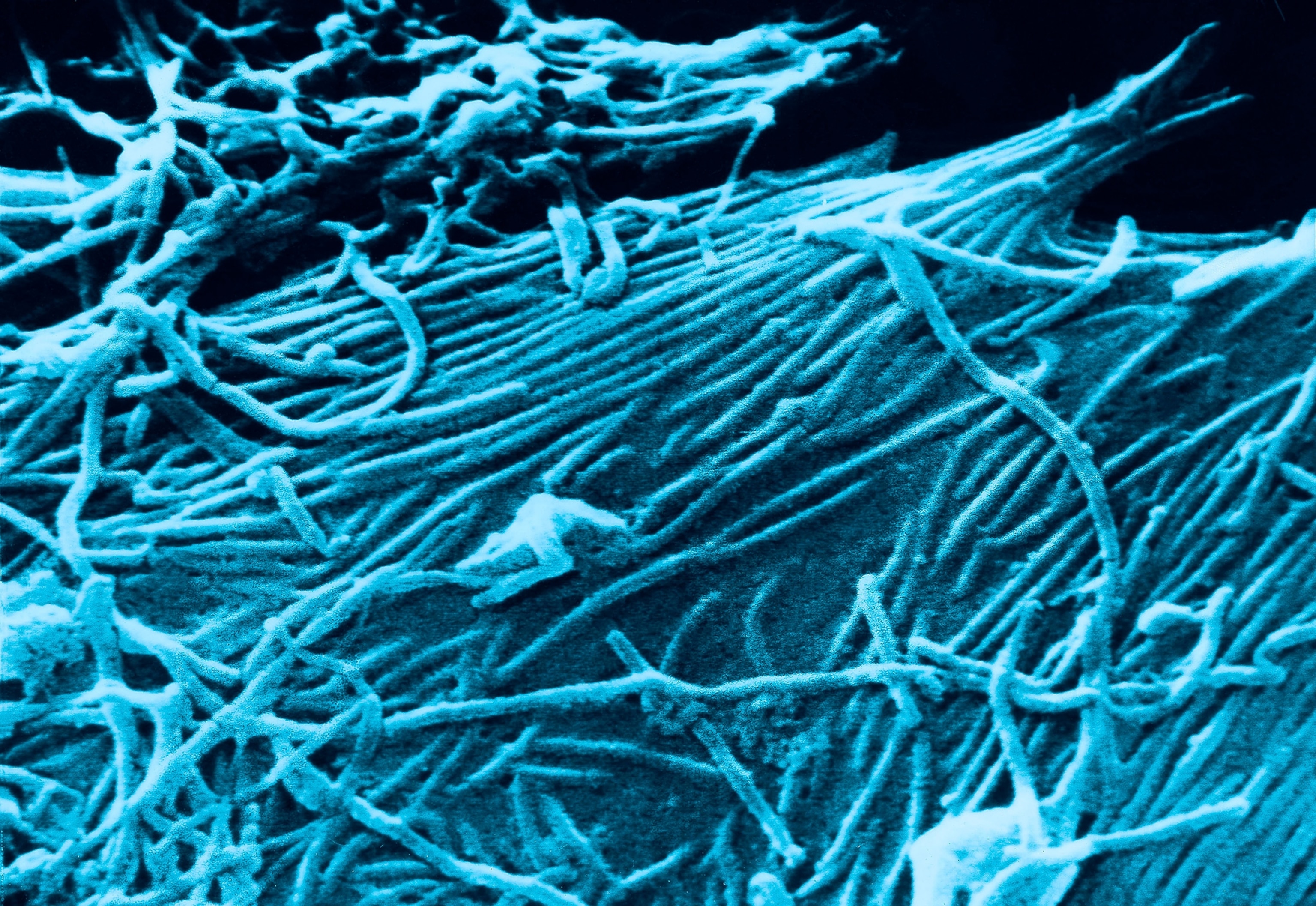Viruses are curious things. The tiny tagalongs aren't exactly alive by most definitions, but they're not really inanimate either. They've flourished and diversified for billions of years and perhaps even had a hand—or a squishy protein coating—in helping the first complex cellular life come to be.
While these microbes have a dizzying array of functions and health effects, the structure of a virus is surprisingly simple. Each one consists of genetic material—either DNA or RNA—encapsulated in a protein pocket called a capsid. Some are additionally enveloped in a soft, lipid wrapping. These tiny virus packages are just tens to a few hundreds of nanometers across. This makes them smaller than most bacteria, which can be a small as roughly a tenth the size of a human blood cell. Such a tiny size means that you can't even spot most viruses with a light microscope.
The one exception, a group known as giant viruses, has members with astonishingly large genomes. These mega-viruses are hundreds of times larger than most, with capsids that span roughly 400 to 500 nanometers across and full viral forms that can measure up to 750 nanometers across.
How do viruses multiply?
Due to their simple structure, viruses cannot move or even reproduce without the help of an unwitting host cell. But when it finds a host, a virus can multiply and spread rapidly.
To identify the correct host, viruses have evolved receptors on their surfaces that match up with those of their ideal target cell, letting the virus get its genetic material inside and hijack its host's cellular machinery to help it reproduce by multiplying the virus' genetic material and proteins.
Using that strategy, the minute marauders have flourished and evolved in step with their hosts. By one estimate, at least 320,000 different viruses can infect mammals alone, and even this massive number may be on the low side. This viral army can cause symptoms as mild as a cough or as deadly as internal bleeding. Some viruses may even cause the runaway cellular growth that is the root of cancer, as is thought to be the case with human papillomavirus and cervical cancer.
How do viruses spread?
Inside their cellular hosts, viruses can create an enormous number of copies and spread the infection to other cells. For example, if you get the flu, your body will be riddled with some hundred trillion viruses in just a few days—more than 10,000 times the number of people on Earth.
How viruses spread from person to person depends on the type. Many hitch a ride in the mist of droplets that flies from your mouth every time you cough or sneeze. A variety of factors can influence how fast these airborne viruses can spread. Flu, for one, seems to survive longer in cool, dry environments, which may be the source of its common winter spread. But in tropical regions, high humidity seems to help the flu jump from person to person.
Other viruses spread most easily through contact with other bodily fluids. For example, Ebola virus spreads from contact with infected blood, feces, or vomit. Unlike many other viruses, scientists think Ebola cannot spread through the air after people with the virus cough or sneeze.
Still other viruses travel through an intermediary, like a mosquito, which then infects people by biting them. One example of these so-called mosquito-born diseases is dengue, which causes a potentially deadly flu-like infection. The risk of dengue has risen in recent years, currently threatening roughly half of the global population, according to the World Health Organization. Other notorious mosquito-born diseases include Zika, Chikungunya, and West Nile.
Where did the first viruses come from?
Some scientists believe that viruses were fairly late to the evolutionary game, forming as remnants from cells that had somehow lost the ability to replicate. But other experts suggest that viruses could predate Earth's most ancient critters.
The giant viruses have a surprising amount of independence compared to their tiny counterparts, so could have provided the building blocks of the diversity of life we know today. By one hypothesis, the first complex life originated from a cell enveloping a virus or, alternatively, a failed viral takeover. Either way, the virus became a permanent cellular resident, forming the first nucleus.
However, scientists can't even agree on whether viruses are truly alive. To be considered a living thing, an organism must be able to grow, reproduce, and generate energy on its own. Some researchers also suggest that living things must be able to respond to stimuli and evolve over time. Viruses can't generate their own energy, and though they can reproduce and even evolve with the assistance of a host, those functions are impossible for one of the tiny entities out on its own.
Instead, Albert Erives of the University of Iowa suggests that viruses are more like vines wrapping around the many branches of the tree of life. They can access and infect critters on each branch, racing to the top to evolve as their hapless hosts morph over time.
Genetic Science Learning Center: Cell size and scale
Nature: The origin of viruses
University of California, Berkeley: Introduction to viruses
Harvard blog: The reason for flu season
World Health Organization: Dengue fact sheet
Biophysical Journal: How viruses invade cells
World Health Organization: Ebola transmission
U.S. Centers for Disease Control and Prevention: Mosquito-born diseases
Virology blog: How many viruses on Earth?
Viral eukaryogenesis: was the ancestor of the nucleus a complex DNA virus?










